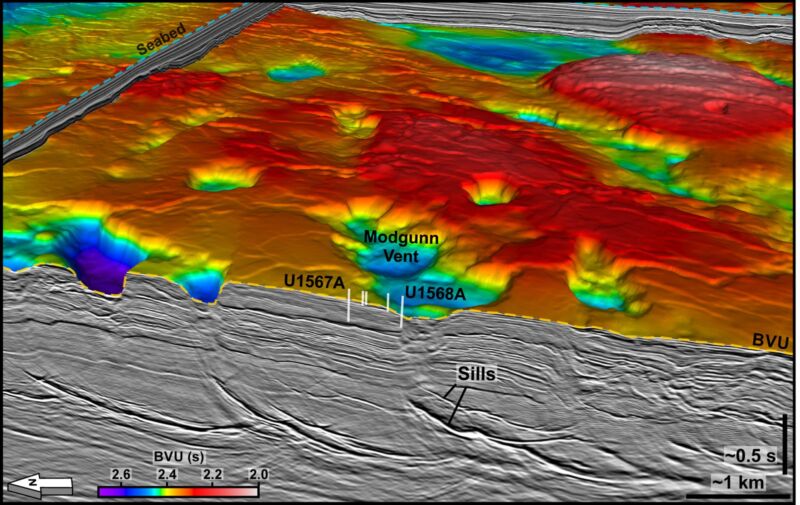Potential source of ancient methane eruption identified

Enlarge / 3D seismic image showing the crater of the Modgunn Vent and others like it. The cratered surface labelled "BVU" is the seabed of 56 million years ago, with the modern seabed shown at top left. White lines are boreholes into the vent. (credit: Berndt et al, Nature Geoscience 2023)
Fifty-six million years ago, trillions of tons of carbon found its way into the atmosphere, acidifying oceans and causing the already-warm global climate to heat up by another 5 C (9 F)-an episode known as the Paleocene-Eocene Thermal Maximum" or PETM."
Like today, the warming climate affected the environment on land and in the sea, with extreme downpours and heat-stressed plankton at the base of the food web. Land animals had a high rate of extinction and replacement by smaller species, and there was a mass extinction of tiny shell-making creatures that lived on the sea bed. The hotter climate supported alligators and swamp-cypress forests, like those in today's southeastern United States, in Arctic latitudes that are covered by ice and tundra today.
Where did all that carbon come from?